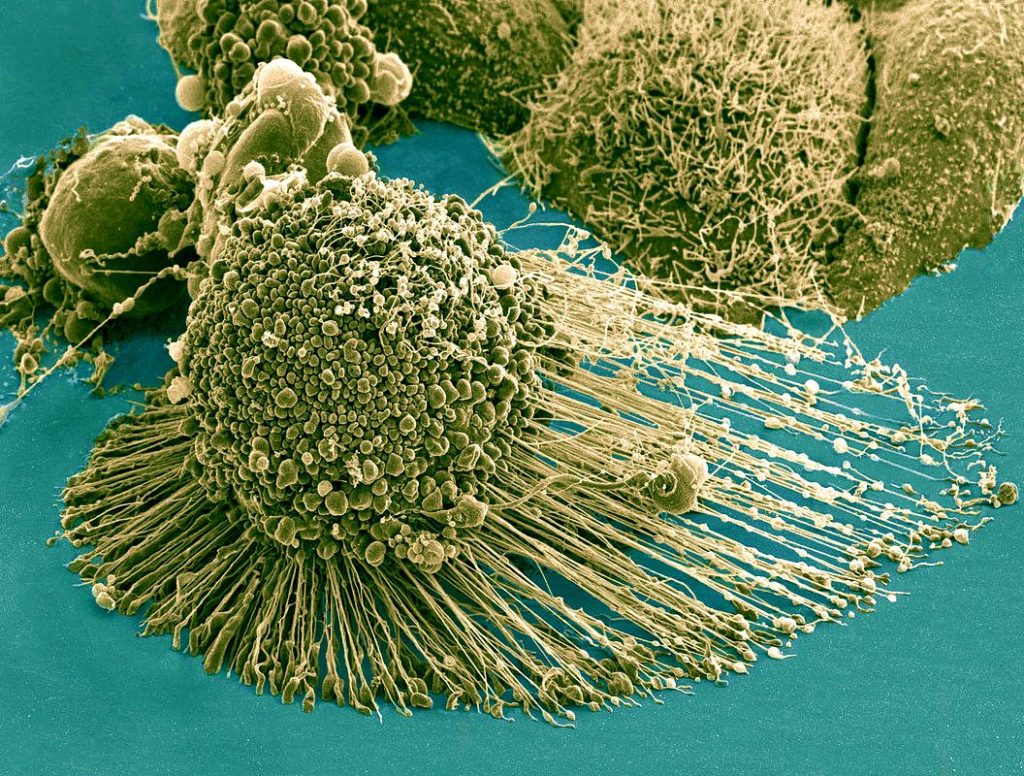As bodyworkers or movement therapists, we tend to think of Spatial Medicine in terms of movement hygiene, the inactivity crisis, and reduction of the strain patterns that lead to pain patterns. And Lord knows, that’s a big enough job these days.
But the other side of Spatial Medicine – long an interest of mine but just now being touched and explored by research – which is delineating the pathologies that can be ascribed to spatial disturbance.
Material Medicine has focused on the chemical and germ/ virus/ fungus theories of cancer – in other words, what is the outside agent? Spatial medicine points to the fascial terrain disruption that precedes tutor genesis, and the role of inflammation in bridging the two.
This blog post – Fascia and Cancer by Dr. Russell Schierling – starts out in a great direction for me – all the references to Scarr and Langevin are great – but then veers off in a direction obviously of interest to the author, the ketogenic diet. The direction I would like to see this go – and I will write it up myself when I get off the road – is to follow the microscopic view of Spatial Medicine. What’s happening spatially down at the cellular level?

Turns out that there’s a line of research already quite well-developed in this direction, headed by Dr Donald Ingber, who spoke at the 1st Fascial research Congress in Boston in 2007. If you are interested, follow Ingber’s lines of reasoning to see how making the cells spatially happy can keep them healthy – and vice versa.
https://en.wikipedia.org/wiki/Donald_E._Ingber
Here’s a really original statement of the inquiry:
https://apps.childrenshospital.org/clinical/research/ingber/PDF/book/Ingber1985-cellastensegrity.pdf
Here’s his Scientific American article that really put him on the map:
http://time.arts.ucla.edu/Talks/Barcelona/Arch_Life.htm
This leads to many articles on mechanitransduction at the cellular level:
http://www.fasebj.org/content/20/7/811
This leads to another question (which I can’t answer yet, but maybe one of you can):
What is the fundamental difference between the fibroblast, the major cell of our structural system, and the basic leucocyte of our immune system?
IOW, how closely related is our form-maintaining function to our invader-resisting system?





